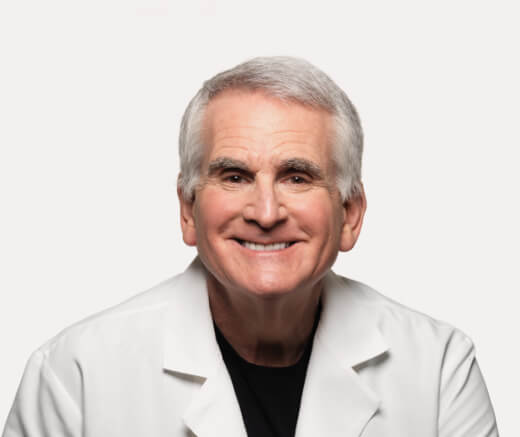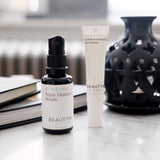
As you reach your forties, if you haven't gotten serious about cleansing yet, it's time. But getting serious about cleansing your skin can lead you down a rabbit hole of different methods from scientific to natural.
If you’ve ever looked up natural ways to clean your skin, you may have run across something called the Oil Cleansing Method. This is a natural skincare method that posits you can clean excess oil on your skin by applying more oil. It’s said to work because of the concept that "like dissolves like", suggesting the new oil absorbs the oil your skin made. It appeals to natural skincare lovers but also generates a legitimate question: can you actually fight oil with more oil? Today on the blog, we’re breaking down the facts and giving you the science behind this claim.
Three Scientific Facts About Oil
The first claim of the oil cleansing method claims is that oil dissolves oil, which is true because, according to Dr. Schultz, “like dissolves like.” It’s also a fact that oil is the root cause of acne, period. Even if you have skin bacteria and clogged pores, without oil, you can’t have acne. Third, and what Dr. Schultz considers “the most important fact about oil: there is no such thing as 'reactive seborrhea' which is the theory that removing oil from the skin makes the skin compensate by making more oil. There is no feedback loop in the skin to do that. There are no oil sensors in the skin to send a message to make more oil.” The bottom line is that the only things that are causing oil production in your skin are the male hormones directly acting on and stimulating your oil glands to produce that oil. To be clear, even women normally have very small amounts of these hormones as well.
How to Effectively Remove Oil From Your Skin
So now that you understand the science behind oil production in the skin, let’s take a deeper look at the Oil Cleansing Method. This method suggests you use a generous amount of oil cleanser and massage it all over your face. Because as we mentioned above, oil dissolves oil, you’ve used the new oil to dissolve your native oil. But then how do you remove the newly applied oil from your skin? Dr. Schultz explains, “Without chemical emulsification of that oil, for example, removing it with a cleanser, you can’t get that new oil off your face. So by removing your oil with another oil you’re just setting yourself up for oilier skin.” You may find that cleansers can be drying, and some can, but this can be easily compensated for by using a water-based moisturizer.
The Best Solution for Oily Skin
While you may not be able to change how your hormones produce oil, you can definitely manage the effect it has on your skin. Extra oiliness wreaks havoc on your skin when it combines with the dead cells building up on your skin’s surface. The combination of oil and debris can clog your pores, leading to discoloration and dullness. Daily exfoliation is the best way to combat the dead skin cells mixing with your excess oil. After 35+ years of showing his patients how to use daily exfoliation, Dr. Schultz knows that glycolic exfoliants are the best way to get the deepest clean. Using them every day will get rid of those mounds of debris without irritation, making way for smooth, glowing skin without the excess oily shine.
A final note from Dr. Schultz, “While the Oil Cleansing Method may work for some of you, and I never argue with success, for those of you with oily or acne prone skin, I never recommend it.” If the method works for you, great. But if it doesn’t, rest assured daily exfoliation can help get you the non-oily, brightening results you want.
 BRX REWARDS
BRX REWARDS





















Leave a Comment